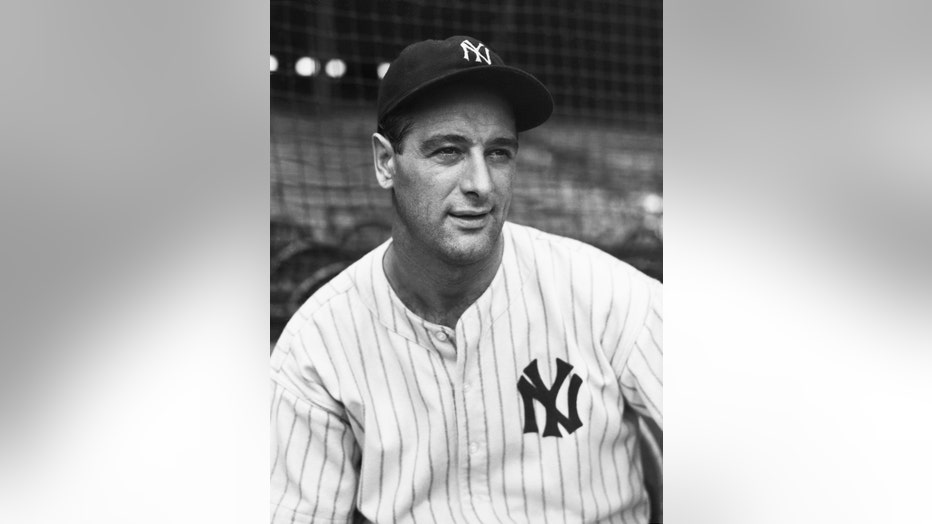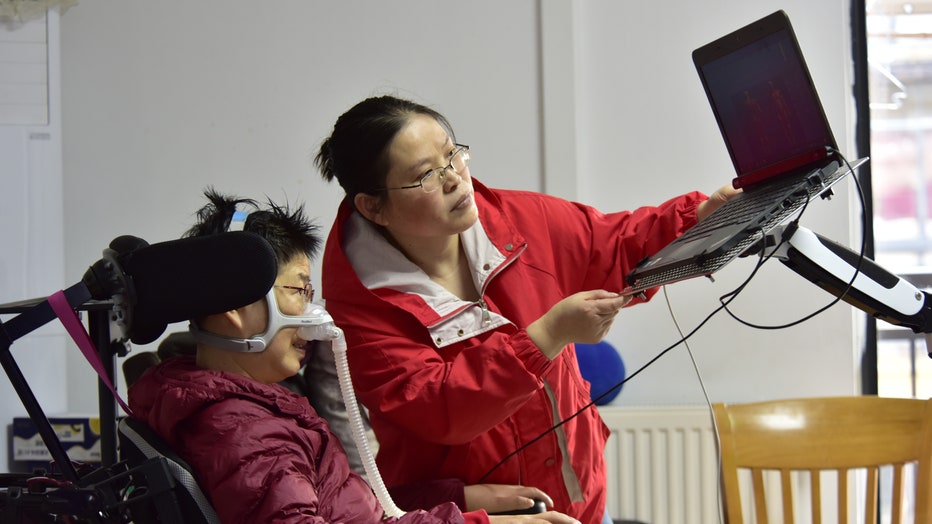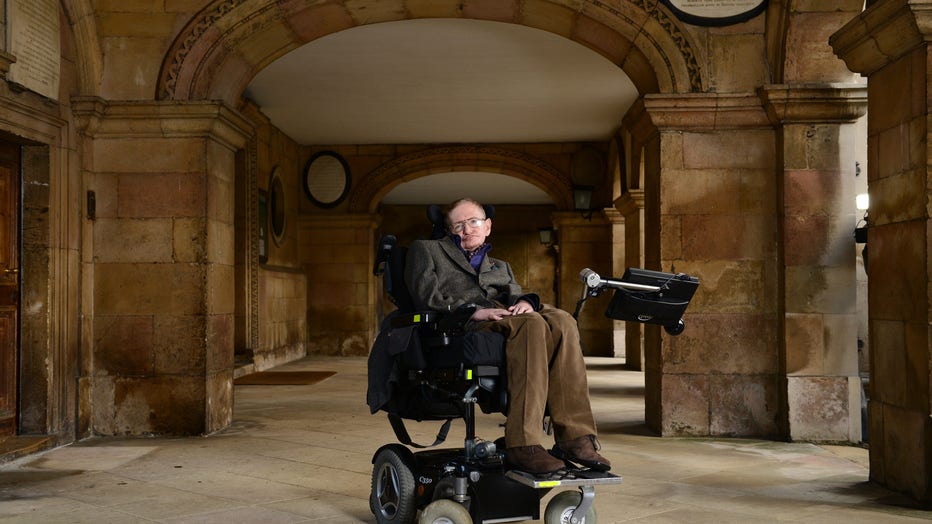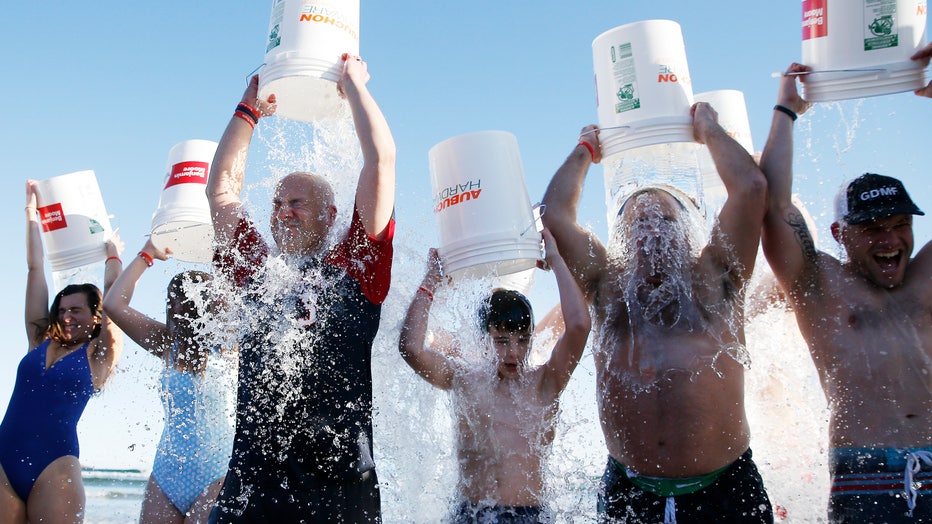ALS: What you should know about the incurable, debilitating disease
PHOENIX - News of the passing of actress Sandra Bullock's longtime partner from ALS has once again lifted public awareness for the disease.
According to a statement from family members, Bryan Randall died following a three-year battle with the disease and chose early on to keep the battle private.
"Those of us who cared for him did our best to honor his request," read a portion of the statement.
Here's what you should know about the disease.
What is ALS?
According to the website of Johns Hopkins Medicine, ALS, which stands for "Amyotrophic Lateral Sclerosis," is a disease that is characterized by progressive degeneration of nerve cells in the spinal cord and brain.
According to Mayo Clinic's website, ALS affects motor neurons, or nerve cells that control voluntary muscle movements, like walking and talking.
"ALS causes both groups of motor neurons to gradually deteriorate and then die. When motor neurons are damaged, they stop sending messages to the muscles. As a result, the muscles can't function," read a portion of Mayo Clinic's website.
ALS is considered to be a common form of motor neuron diseases, according to the National Institute of Neurological Disorders and Stroke.

Lou Gehrig (Getty)
The disease, according to the website, is often called Lou Gehrig's Disease. According to his entry in the Encyclopedia Britannica, Lou Gehrig was a professional U.S. baseball player who was diagnosed with the disease in 1939 and died in 1941.
What causes ALS?
According to Johns Hopkins Medicine's website, experts do not know the cause of ALS.
On the Mayo Clinic's website for ALS, it is stated that for about 10% of people with ALS, a genetic cause can be identified.
"Most theories center on a complex interaction between genes and factors in the environment," read a portion of the Mayo Clinic's website on ALS.
According to the Mayo Clinic's website, there are some established risk factors for ALS, such as:
- Age, with ALS being most common between the ages of 60 and the mid-80s.
- Gender, with slightly more men than women developing ALS before the age of 65. The gender-based difference, however, disappears after the age of 70.
Other environmental factors have also been associated with an increased risk for ALS, according to the Mayo Clinic, such as smoking, environmental toxin exposure, and military service.
"It's not clear what about military service might trigger ALS. It might include exposure to certain metals or chemicals, traumatic injuries, viral infections, or intense exertion," read a portion of the Mayo Clinic website.
ALS, according to Johns Hopkins Medicine's website, is not contagious, meaning it can't spread from person to person like the cold or the flu.
What are the symptoms of ALS?

An ALS patient wears a ventilator at home and uses an eye-control device to write an article to communicate with her patients via livestream. (CFOTO/Future Publishing via Getty Images)
According to the website of Johns Hopkins Medicine, people with ALS may first have weakness in a limb that develops over a matter of days or weeks.
"Then, several weeks to months later, weakness develops in another limb. Sometimes the initial problem can be one of slurred speech or trouble swallowing," read a portion of the website.
More symptoms, according to the website, may be noticed as ALS progresses. The symptoms include:
- Muscle twitching and cramping, especially those in the hands and feet
- Loss of hands and arms motor control
- Impairment in the use of arms and legs
- Tripping and falling
- Dropping things
- Persistent fatigue
- Uncontrollable periods of laughing and crying
The website states trouble breathing, trouble swallowing and paralysis are also symptoms in the later stages of the disease.
According to the Mayo Clinic, some people with AMS may eventually be diagnosed with a form of dementia called frontotemporal dementia.
Read More: Bruce Willis diagnosed with Frontotemporal Dementia: What you should know about the disease
How can someone be diagnosed with ALS?
According to the Cleveland Clinic's website, a healthcare provider will do a physical exam, and ask a person about their medical history. Several other theses will also be done to confirm an ALS diagnosis, including
- Blood and urine tests
- A neurological examination
- Electromyogram, or a test to measure the electrical activity of a person's nerves and muscles
- A nerve conduction study to test nerves' ability to send a signal
- MRI to look at a person's brain or spine for areas of damage
Other tests may also be done to rule out different diseases with similar symptoms, including spinal fluid tests and muscle and/or nerve biopsy.
Can ALS be cured?
According to the websites of Cleveland Clinic and Johns Hopkins Medicine, there is no cure for ALS.
Are there treatments for ALS?

(Photo Illustration by Milos Vujinovic/SOPA Images/LightRocket via Getty Images)
According to the Cleveland Clinic's website, treatments can slow the progression of ALS, and they could include the following:
- Medicine
- Physical therapy
- Nutritional counseling
- Speech therapy
- Assistive devices and special equipment, including wheelchairs and electric beds
Some people with ALS, according to the Cleveland Clinic's website, also choose to do what is known as "voice banking," or the act of recording a person's voice in a speech synthesizer, which will allow a person to communicate via the speech synthesizer if they can't speak later on.
On the Mayo Clinic's website, it is stated that the Food and Drug Administration has approved three medicines for the treatment of ALS, including:
- Riluzole
- Edaravone
- Sodium Phenylbutyrate-taurursodiol, also known as Relyvrio.
Treatments, according to the Mayo Clinic's website, cannot reverse the damage caused by ALS.
What can I do to prevent getting ALS?
According to the Cleveland Clinic's website, there is no proven way to prevent getting ALS.
What is the outlook for ALS patients?
According to the Cleveland Clinic's website, people with ALS typically live for about three to five years after diagnosis, but others can live for 10 years or even more.
"A person's prognosis depends on how quickly the symptoms progress," read a portion of the website.
Are there other famous people with the disease?

Stephen Hawking, in a photo taken in 2013. (Photo by Karwai Tang/Getty Images)
Besides Lou Gehrig and Bryan Randall, there have been a number of well-known people who have been identified as battling ALS or died from the disease.
Well-known people who died from ALS include scientist Stephen Hawking, who died in 2018 after living with the disease for over 50 years, as well as Pete Frates and Pat Quinn, both of whom founded the Ice Bucket Challenge that went viral on social media for some time. Frates died in 2019, while Quinn died in 2020.
Other celebrities with ALS include singer Roberta Flack and former Chicago Bears football player Steve McMichael.
You mentioned the Ice Bucket Challenge. What was it?

People participate in an ice bucket challenge in 2019. (Photo by Jessica Rinaldi/The Boston Globe via Getty Images)
As mentioned above, the Ice Bucket Challenge was co-founded by Quinn and another man named Pete Frates.
According to the Associated Press, Quinn saw the ice bucket challenge in 2014, on the social media feed of a professional golfer named Chris Kennedy. In the video, Kennedy dared his wife's cousin, whose husband had ALS, to take a bucket of ice water, dump it over her head, post a video on social media and ask others to do the same or to make a donation to charity.
Quinn and Frates, along with their teams of supporters, helped popularize the challenge.
The challenge has raised about $220 million worldwide, including $115 million alone for the Washington-based ALS Association, according to the AP in 2019.
This website does not provide medical advice. The information provided above is meant to be informative, and nothing on this site should be considered as a substitute for professional medical advice, diagnosis or treatment. If you have concerns about your health, reach out to your primary care doctor or other health care providers.

